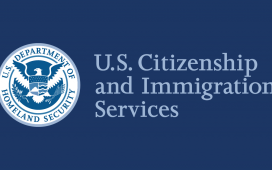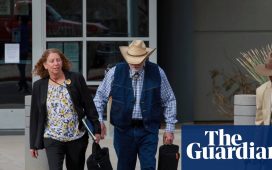Texas food banks are struggling to meet unprecedented demand and many Texans seeking help are leaving empty-handed, internal Texas Department of Emergency Management (TDEM) documents reveal.
As the coronavirus pandemic has hit – and large swathes of the US economy have shut down – food banks across the US have seen a huge rise in demand. But as food supplies dwindle, many in Texas are being turned away and experts and community workers say that the food crisis is hitting the state’s large immigrant population especially hard.
The TDEM documents are from its most recent state situation report and show food banks in the state are seeing an 88% increase in the number of people showing up to food distribution centers, but sector representatives say that even those figures may understate the surge.
Celia Cole is CEO of Feeding Texas, an association of the state’s food banks. Cole said: “We’re seeing now close to a 100% increase in the number of people seeking out help compared to last year. That means that there’s double the need there was a year ago.”
But these numbers only represent the people that food banks are actually able to supply.
TDEM’s situation report adds: “In the last two weeks, Texas food banks report having to turn people away at approximately 30% of their distributions”.
Cole said that early in the crisis, Texas food banks “would take food to a distribution that might normally have 100 families, take enough food for 200 families and then 800 families would show up”.
As a result, Cole said, food banks in the state are depleting their supplies quickly. “If I look at our five largest food banks, which is where the greatest volume is going out, they’re reporting on average they’re going to run out of food in a couple of weeks. That’s scary. Those food banks are where you’re seeing the lines of a thousand people show up,” she said.
In addition, as demand soars, the normal source of donations, surplus from grocery stores, has dried up.
According to the situation report, Texas food banks are reporting a 13% decrease in monetary donations and a 39% decrease in food donations. And a relatively older volunteer workforce in partner agencies such as churches, which usually handle distribution of food packages, is sheltering in place to avoid contracting Covid-19.
“This is by far the biggest crisis we’ve ever faced and the greatest need we’ve ever seen across our network,” Cole said.
While the Trump administration recently announced a Coronavirus Food Assistance Program (CFAP), in which the US Department of Agriculture (USDA) will buy meat and produce to be distributed to food banks, Cole says that it will not come quickly enough to solve food banks’ immediate problems.
“USDA has struggled to procure this food and we don’t expect them to arrive at our food banks until July,” she said.
In an email, a USDA spokesperson said: “USDA is working as quickly as possible to implement CFAP.”
Raj Patel, a research professor at the University of Texas at Austin and the author of several books on food systems and food security, said the crisis in Texas had hit a state that already struggled with poverty and food insecurity.
He said that in 2015, a survey by himself and his colleagues “found that 25% of people in Austin, Texas, which is not a poor city, were food insecure.”
Patel added that Texas’s deteriorating food security has been exacerbated by the hard line immigration policies of the Trump administration. “People are worried about Ice raids,” Patel said.
In Austin, he said: “As soon as a rumor circulated that Ice was staking out food banks and supermarkets in Latinx neighborhoods that undocumented people might go to, all of a sudden, Latinx people wouldn’t go there and someone had to become the designated shopper for a bunch of families.”
Carmen Llanos Pulido is a community organizer and the Executive Director of Go Austin/Vamos! Austin, which works to address systemic health inequities in Austin communities where many Latino immigrants live.
She said that while some may be avoiding food banks, mutual aid networks were springing up, and that “a lot of people in the immigrant community are feeding each other”.






